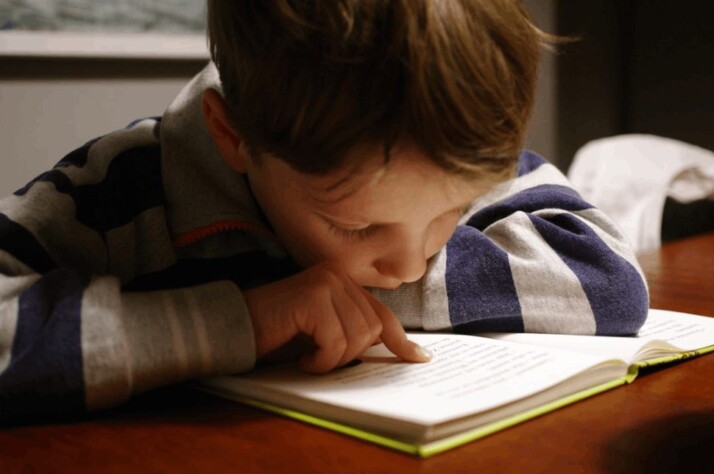Understanding the process of reading is crucial because it enables teachers to see how students are using language and understanding texts.
What Does Reading Process Mean?
The reading process is the sequential pattern in the cognitive process of absorbing, understanding, appraising, and recalling what is written in a text.
When you read a text, you first absorb the words and understand the text, then appraise and evaluate it. Eventually, you retain what you read, and finally, you turn your attention to the next text.
Students use this series of behaviors and mental skills to decode text. It involves word recognition, comprehension, and fluency to achieve an understanding of the text.
The primary components of the reading process are recognition and comprehension. Students are required to identify words from a given text and make sense of the meaning as well.
Why Is Reading Process Important?
Reading is a skill that helps you absorb information and understand the world around you. When students follow the process, they can find meaning in the text and enjoy their experience in the long run.
Good readers tend to focus on the meaning of words and the content of texts. By following the reading process, they can determine the critical parts of the passage and how they affect the story. They can also predict how a text will end.
Lastly, the readers can use what they know about the language to assist them when reading.
The Three Effective Process of Reading
Reading, writing, and speaking often intertwine in daily life. It is necessary to have a certain level of literacy to read, understand written material, and speak confidently. It’s all a process, and mastering this process is what becomes more important along with it.
With that being said, it is also essential to understand the three stages of reading – pre-reading, through reading, and post-reading.
1. Pre-Reading
The activities you do before reading are vital because they allow you to focus on your thoughts. A helpful goal is to review what you have to read before you start to read it. It helps you prepare for your reading session and mentally prepare yourself for what lies ahead.
Pre-reading the text helps you set a goal for your reading, making it easier to locate the information you need. Moreover, glancing through titles, headings, and images arouses curiosity in the readers, making them more involved in the reading.
This is the stage where the readers do a surface-level reading to get acquainted with the theme of the story. You can quickly skim and scan the content to pick unfamiliar words, key phrases, and visuals. It helps you understand if a text is informational, persuasive, or entertaining.

2. Through Reading
Once you enter the reading zone, through-reading is the process of actively reading through a story or information. This step entails reading the text in a particular order to get a sense of the overall story and dive deep into the details.
The reader is expected to read through the sentences to figure out the author’s perspective regarding the topic. If you encounter new words, try to reread the paragraph to make sense of the word based on the surrounding clues.
Silent reading is also an effective way of taking in the meaning of words rather than listening to them out loud. Also, look for answers to your queries during the pre-reading step to strengthen your prediction of the story.
3. Post-Reading
Readers summarize what they have read, reflect, and question their understanding of the text to fill in the gap left from the previous stages.
It involves critical thinking and evaluating if the writer could successfully convey what he intended. You should be able to create visual maps of the main ideas and analyze the pattern, content, and language of the text.
Post-reading will help you determine if your initial prediction of the story was correct. Make sure to get the answers to the questions you had all along the way and organize the thoughts for a clearer picture.
Wrapping Up
Reading is one of the most important activities that you should teach students to succeed in education. It will help them maintain a level of comprehension while reading.
Students should learn to read actively and know to maintain their comprehension. While we all need to read to succeed in various aspects of life, not all reading is effective.
Effective reading is a process that requires effort and preparation. This article discusses the three effective processes of reading which can be used to prepare oneself for a complete comprehension of a text.
Explore All Readability Articles
What is Reading? — Making Sense of Letters and Symbols
When studying the English language, you should familiarize yourself with its different concepts. It includes spelling, vocabulary, grammar, and reading.…
What is Readability Score? — a Quick Guide
Your text should cater to all kinds of readers. When you’re writing an article that intends to reach various individuals,…
Causes of Reading Comprehension Problems
Reading comprehension is the ability to understand and interpret written words, connecting the information in the text with previous knowledge.…
What Is ZPD Reading Level?
Everyone unique and we all have a unique understanding of the world. So what should the level of difficulty be…
The Best ELL Strategies for Reading!
Non-native English speakers can be proficient readers in their original tongue. However, those who are enrolled in an ELL (English…
These Are the Best Practices in Reading!
Best practices have been a topic of discussion in the reading education community for a long time. Among these best…
